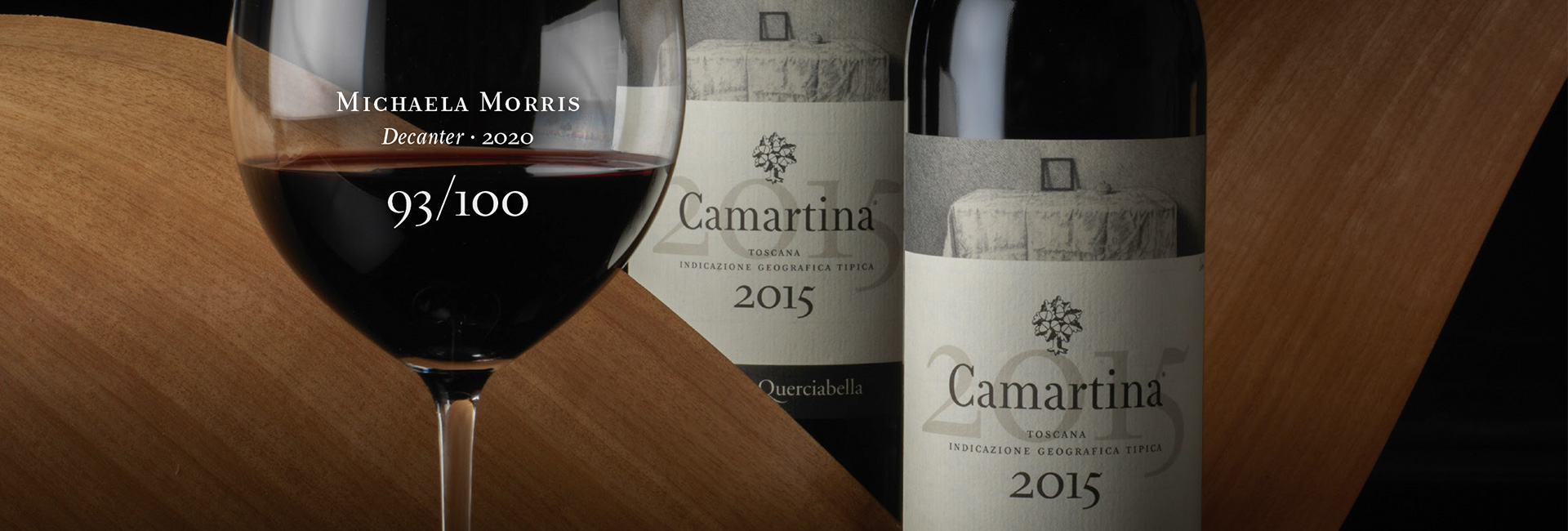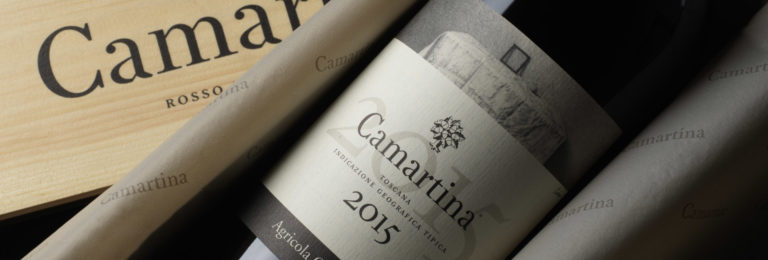Decanter features Camartina 2015 among the Top Super Tuscans from Chianti Classico.
In an article for Decanter Magazine about the genesis and the future of Super Tuscans made in Chianti Classico, Michaela Morris reviews Camartina 2015 with a score of 93/100.
“Camartina is from Querciabella’s home-base vineyards which rise from 350 to 600 metres in the windy area of Ruffoli. Stylish in a very buttoned-up manner, it is rather understated and sneaky in its charms. Seductive scents of toast, blackberry, cherry and Mediterranean herbs emerge with coaxing and eventually take hold. Creamy in texture with long, velvety tannins and a juicy core, this offers exceptional freshness
for the vintage and promising length.”
Michaela Morris · Decanter
The meteoric rise of the so-called Super Tuscans has without a doubt made the fortunes of Chianti Classico putting it firmly at the centre stage of the Italian and global wine scene. It can be argued that if it weren’t for a bunch of visionary producers, the now DOCG appellation would have met with a very different fate.
In the 1970s the whole region of Chianti was suffering from an identity crisis.
Chianti Classico, just established as a DOC in 1967, risked being no different: its rules of production favoured quantity over quality by allowing high yields, severing the potential of Sangiovese and making white grapes compulsory in the blend composition.
In a bold move, forward-thinking winemakers felt their strive for excellence was impeded by such regulations, and decided to go their own way, even if it meant declassifying their top wines to “Vino da Tavola” – later labelled as “Toscana IGT”.
The international success and acclaim of Super Tuscan were certainly among the reasons behind the Consorzio’s decision to ban white grapes, allow monovarietal Sangiovese while also permitting up 20% international varieties, to lure those top producers back into the Chianti Classico fold. According to Morris, it worked out for the best as “quality has never been better and the wines of Chianti Classico are among Italy’s finest”.
However still today, some of the region’s best wines fall into the IGT Toscana category. It is not uncommon to find a Cabernet or Merlot-led wine at the pinnacle of the portfolio of Chianti Classico producers, as according to some winemakers, Sangiovese benefits from blending especially with these two noble grapes. For example, Camartina, our flagship Super Tuscan since 1981, is a blend of Cabernet Sauvignon and Sangiovese, a grape makeup that precludes it from the Chianti Classico DOCG.
Morris is a Chianti Classico Ambassador ad Honorem and one of Decanter’s contributors for Italy. She is no stranger to our Sangiovese wines, too, and in her full report about this year’s edition of Chianti Classico Collection, she listed Querciabella Chianti Classico Riserva 2016 as one of the best tastings within the category.


